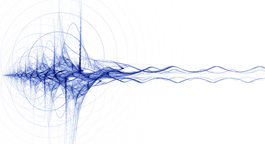1. Impulse from the User
User Driven Services start with the user.
 People engage the world to satisfy needs and fulfill desires. That engagement marks our intent as we try to bend the universe to our will. User Driven Services begin with that essential act, responding to each user’s expressed intent to initiate and drive every experience.
People engage the world to satisfy needs and fulfill desires. That engagement marks our intent as we try to bend the universe to our will. User Driven Services begin with that essential act, responding to each user’s expressed intent to initiate and drive every experience.
 Industrial era corporate systems put the factory and factory owners at the helm, driving demand and shaping customer behavior by segmenting, targeting, and bombarding potential consumers with stimuli designed to increase sales. This intrusive, wasteful behavior exploited opportunities to invade people’s attention in hopes that they might trigger a purchase or lay the groundwork for a future purchase.
Industrial era corporate systems put the factory and factory owners at the helm, driving demand and shaping customer behavior by segmenting, targeting, and bombarding potential consumers with stimuli designed to increase sales. This intrusive, wasteful behavior exploited opportunities to invade people’s attention in hopes that they might trigger a purchase or lay the groundwork for a future purchase.
In contrast, User Driven Services start with a user’s expressed intention, to buy, to learn more, or to create value in some way, then, they simplify, automate, and speed the path to satisfying that intention.
Examples
Web Browsers navigate to user selected hyperlinks and URLs, not to pre-programmed schedules of shows constructed to be passively viewed. Search engines present results based on keyword queries, not based on demographics or gender. Emails are sent when you hit send, not before. Cell phones initiate outbound calls only upon users’ direction. Products are shipped when purchased. Credit card information is not requested by vendors until the user has indicated they are ready to make a purchase and credit cards are charged only after explicit confirmation.
Questions
- Do users initiate and motivate the key interactions with the service?
- Are service interactions always initiated by expressed user intent?
- Are users free from invasive, unsolicited “push” approaches such as direct mail, SPAM, and telemarketing?
- Does the service avoid attention invasion? Or does it exploit user attention to present unrequested messages at inconvenient times about potentially undesired opportunities?
This article is part of a series. It is the first of ten characteristics of User Driven Services:
 Impulse from the User
Impulse from the User- Control
- Transparency
- Data Portability
- Service Endpoint Portability
- Self Hosting
- User Generativity
- Improvability
- Self-managed Identity
- Duty of Care
More soon…
This material is based upon work supported by the National Science Foundation under Award Number IIP-08488990. Any opinions, findings, and conclusions or recommendations expressed in this publication are those of the author and do not necessarily reflect teh views of the National Science Foundation.
